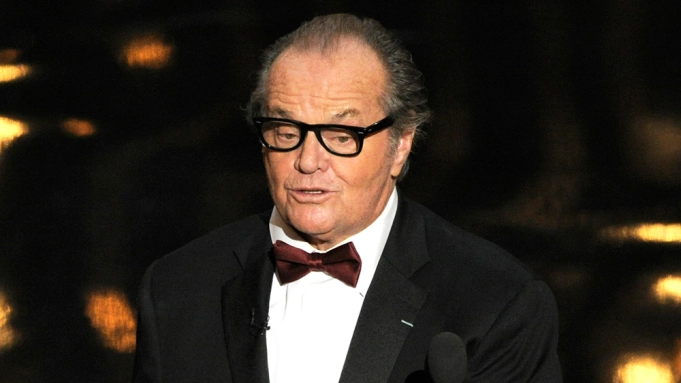Unquestionably, one of the most famous performers to have ever lived in America is Jack Nicholson. Nicholson, whose acting career began in the late 1950s and reached previously unimaginable heights in the 1970s, was a key player in the transition from Old Hollywood to New Hollywood. Nicholson may have been the best at portraying the rebellious attitude of cinema due to his superb acting abilities and his regular counter-culture character.
Nicholson has won many awards for his performances during the course of his 54-year acting career. In addition to winning the best actor prize at the famous Cannes Film Festival in 1974, he was nominated for seven BAFTA Awards and won three of them. He was also nominated for 12 Academy Awards and won three of them. Despite retiring in 2010 and not acting for more than ten years, Nicholson has a long history of outstanding performances. Let’s look at his top films in order of their combined Rotten Tomatoes critic ratings.
50. Man Trouble
According to critics on Rotten Tomatoes, “Man Trouble” is Jack Nicholson’s lowest-rated movie. It is a sad example of a picture that had enormous potential on paper but ended up being a confusing jumble when it was actually released. The idea of a guard dog trainer becoming entangled in a blackmail scheme sounds plausible enough, but the people working on the project behind the scenes give the movie a lot of promise. The cast also included Ellen Barkin, Harry Dean Stanton, Michael McKean, and Beverly D’Angelo in addition to Jack Nicholson.
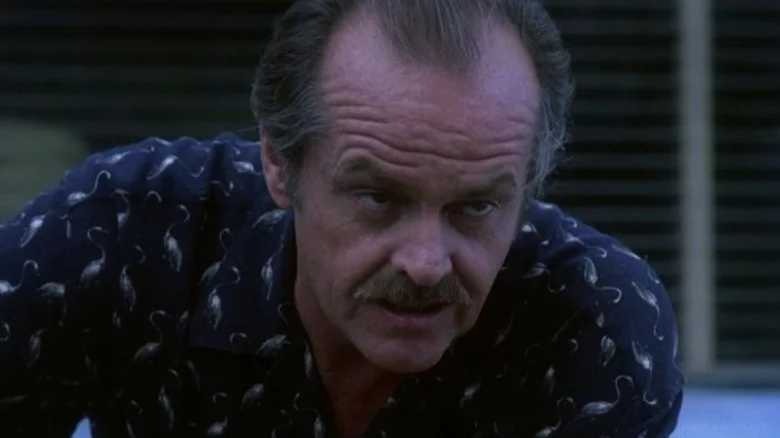
Bob Rafelson, with whom Nicholson had previously worked on some of his most influential movies like The King of Marvin Gardens, The Postman Always Rings Twice, and Five Easy Pieces, directed the movie. Another skilled Nicholson partner, Carole Eastman, who also wrote the scripts for the aforementioned Five Easy Pieces and The Shooting, another critically acclaimed early Nicholson career film, penned the script for “Man Trouble.”
Sadly, the final product makes it difficult to fully appreciate the extraordinary fusion of ability on both sides of the camera. The film was panned by Rotten Tomatoes critics, who described it as a dismal return for a comedy that is dreadfully unfunny.
49. A Safe Place
The odd movie “A Safe Place” defies classification. The movie’s poster describes it as “a new dimension in filmmaking” and “a rare and distinctive experience.” The trio of Tuesday Weld, Orson Welles, and Jack Nicholson star in this 1971 adventure picture, which was written and directed by Henry Jaglom. By letting past, present, and future converge in what might be considered a fantasy realm from the viewpoint of Tuesday Weld’s frail character, the movie depicts time as a hazy concept.
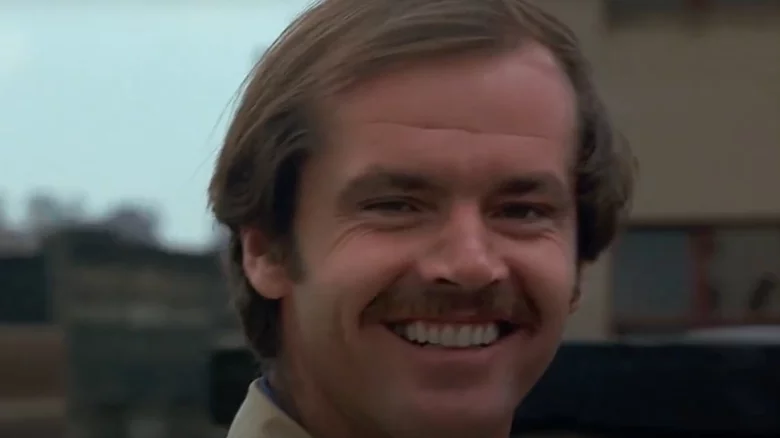
The experimental aspects of A Safe Place plot make it a divisive work of cinema. There are some supporters of the movie despite the fact that moviegoers dismissed it as pretentious, pointless rubbish. The movie received a largely favorable review from Time Out, which praised the film’s subtext for being “sometimes indulgent, frequently vulnerable, and occasionally fascinating.” “A Safe Place” had sufficient aesthetic value to deserve inclusion in the Criterion Collection.
48. The Cry Baby Killer
In addition to being his first ever cinematic role, Jack Nicholson’s third-lowest rated film. Nicholson was cast in the lead part of Jimmy Wallace right away. Jimmy Wallace is a mild-mannered youngster who ends up in a dangerous standoff with the police after getting into a fight with two gangsters and mistakenly believing he has killed two people. Nicholson was 21 when the movie came out, but it would take him a while longer for his acting career to achieve significant recognition.
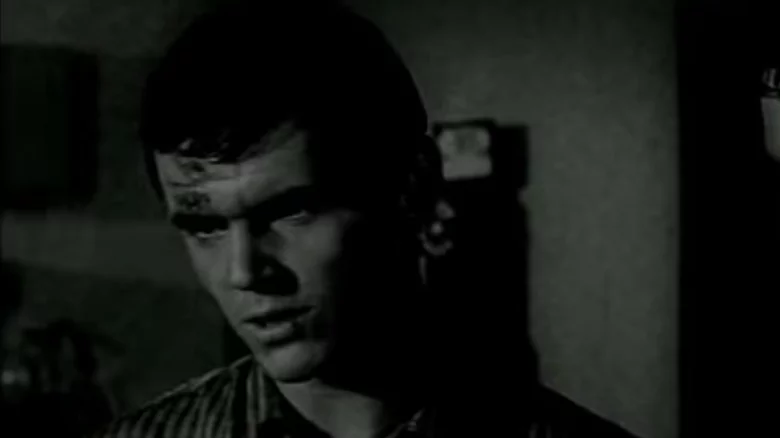
Roger Corman, known for producing movies quickly and cheaply, was the mastermind behind “The Cry Baby Killer.” Almost the course of his extensive career, Corman has created over 500 films. Jack Nicholson and Roger Corman began a long-lasting working connection as a result of this project, and it was crucial to the early stages of his acting career. Nicholson and Corman would go on to collaborate eight more times throughout the 1960s after “The Cry Baby Killer.”
47. The Evening Star
You might be shocked to hear that the drama “The Evening Star” from 1996 is a sequel to the classic James L. Brooks movie “Terms of Endearment” from 1983. The same cast of people is present in this sequel, which takes place 13 years later and explores how their lives have altered, as well as their many emotional and love struggles.
Although the original story’s author and director, James L. Brooks, did not return, the Larry McMurtry “Houston” series was once more used as inspiration. Despite the fact that the preceding four books in the series have never seen a film adaptation, “The Evening Star” is the last book in the collection.
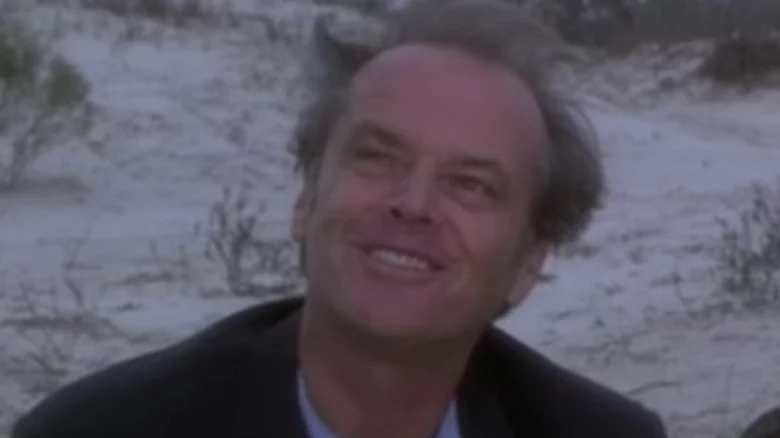
With Shirley MacLaine once more playing the major role, the cast also features Bill Paxton, Juliette Lewis, and Miranda Richardson. Jack Nicholson returns to his role as Garrett Breedlove from “Terms of Endearment.” The movie received a 1.5-star rating from legendary cinema reviewer Roger Ebert, who termed it “a wholly unconvincing sequel” and “thin and artificial.”
46. The Fortune
Even though they produced a few critically acclaimed films together, “Man Trouble” wasn’t the only one that Jack Nicholson and writer Carole Eastman worked on that received negative reviews. Another instance of a fantastic collection of talent being wasted is “The Fortune.” Warren Beatty and Stockard Channing played the other two lead characters, while “The Graduate” director Mike Nichols was in the director’s chair. Nicholson also starred, and Eastman wrote the screenplay.
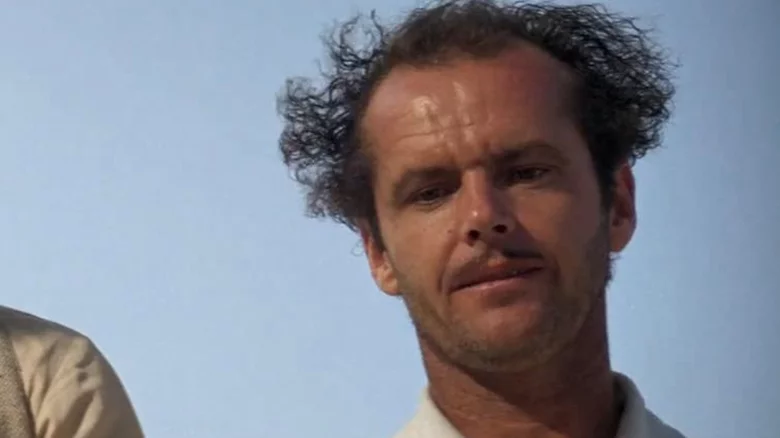
The Mann Act, which prevented a woman from being transferred across state borders for what was deemed “immoral reasons,” is a key legal issue in “The Fortune,” which is set in the 1920s. The character in question in this movie is Stockard Channing, an heiress to a sizable wealth. When trying to bring her across state lines, Nicholson and Beatty portray two hustlers who end up falling in love with her. The movie “The Fortune” was meant to be a screwball comedy in the style of old Hollywood movies. However, most Rotten Tomatoes reviewers concurred that the tone and humor were off in the movie.
45. Hell’s Angels on Wheels
It is noteworthy to note that just two years previously, Jack Nicholson acted in a separate motorcycle movie that received less favorable reviews. This motorcycle movie was one of the most significant early on in Jack Nicholson’s playing career. In the film, Nicholson plays a gas station employee who is eager to join the Hell’s Angels motorcycle gang. He finds their propensity for murder and violence startling, and he finds himself in difficulties when he develops feelings for the girlfriend of the gang boss.
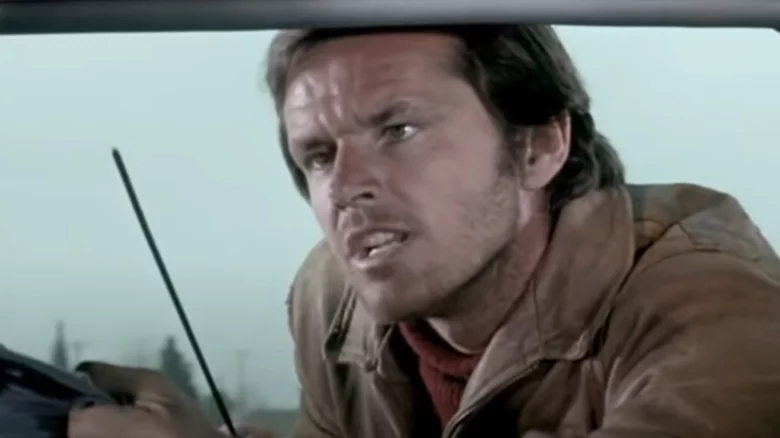
The Hell’s Angels, a real-life biker club, are the focus of “Hell’s Angels on Wheels,” as one may infer from the title. Despite the fact that there were many biker movies made in the 1960s, this one stands out for featuring many actual Hell’s Angels motorcyclists, including the gang’s leader, Sonny Barger.
Another Roger Corman produced movie, “Hell’s Angels on Wheels,” made use of the cinematography skills of László Kovács, who would later work on scores of critically acclaimed movies, including “Easy Rider.” Roger Ebert delivered “The reviewer scored the movie “Hell’s Angels on Wheels” 2.5 stars and said that “the plot has gaps wide enough even to ride a Harley-Davidson through.” However, the movie is much better than it could have been.”
44. How Do You Know
Before deciding to retire, Jack Nicholson acted in just one more movie, the 2010s “How Do You Know.” Sadly, rather than leaving the world with a boom, this acting legend died quietly. Reese Witherspoon plays a softball player who is beyond her prime and is caught up in a love triangle with Paul Rudd and Owen Wilson. Near the start of the movie, Paul Rudd’s character gets fired from the company his father, played by Nicholson, manages.
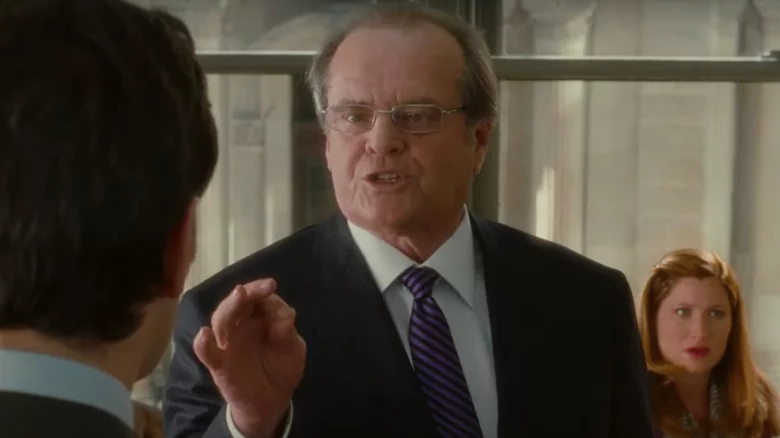
“How Do You Know” had an outrageous $120 million budget, but only made back just under $50 million at the box office globally. “How Do You Know,” Jack Nicholson’s final movie, is not only a commercial and critical failure, but it also turns out to be the last film written and directed by James L. Brooks, who previously worked with Nicholson on the critical and commercially successful movies” “Terms of Endearment,” “Broadcast News, and “As Good as It Gets.”
43. The Terror
Another early career combination of Roger Corman and Jack Nicholson is “The Terror,” which was released in 1963. The film’s lead, Jack Nicholson, portrays a lost French soldier who seeks refuge in the eerily eerie castle of Baron von Lepp, who is portrayed by horror legend Boris Karloff.
The movie was notoriously sloppy throughout production, and it shows in the final product. Without a completed script, the production kicked off, and the directors changed frequently throughout. Up to seven different individuals served as the director before being ousted, quitting, or otherwise replaced. Along with other future household names like Jack Hill, Monte Hellman, and Francis Ford Coppola, Roger Corman was among the roster of filmmakers.
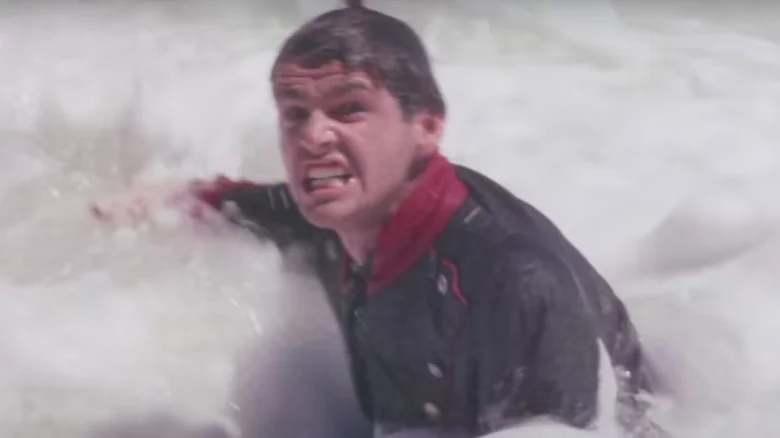
Due to the public domain status of “The Terror,” which allowed for endless re-releases and creative remixing and incorporation, the movie has a bit of a bad reputation. There is still a potential that you have seen footage from “The Terror” even if you have never seen the movie. The Peter Bogdanovich film “Targets,” which was released five years after “The Terror,” and also starred Boris Karloff, this time as a person based on him, a horror star named Byron Orlok, contains scenes from “The Terror” as well as several other movies.
42. The Bucket List
If we exclude his appearance as himself in Casey Affleck’s “I’m Still Here,” “The Bucket List” would have been Jack Nicholson’s sixth and final movie before retiring. Although it received a terrible rating from critics and a strong fresh good rating from larger viewers, this movie caused a great deal of controversy on Rotten Tomatoes. Jack Nicholson and Morgan Freeman play two men who make the decision to leave the hospital in which they are both receiving care as terminally ill patients in order to mark as many items off of their bucket lists as they can while accepting their death in this 2007 dramedy.
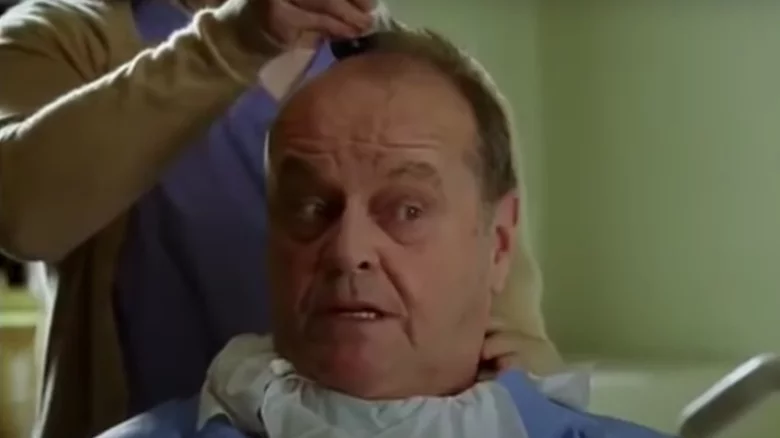
Rob Reiner, who earlier directed Nicholson in “A Few Good Men” (1992), for which Nicholson received an Academy Award nomination for the best-supporting actor, directed the movie. Many people enjoyed the movie, while reviewers thought it was excessively sentimental. Richard Crouse, who described the movie as “a formulaic movie that seems to attempt and mislead the viewer into bursting into tears when he or she could merely be struggling to repress yawns,” was one among those who were unimpressed with it.
41. The Last Tycoon
The 1930s Hollywood setting of “The Last Tycoon” centers on a film producer who is praised as a genius despite working himself to death. Given that “The Great Gatsby” author F. Scott Fitzgerald’s final, unfinished novel served as its inspiration, the story’s basis was solid.
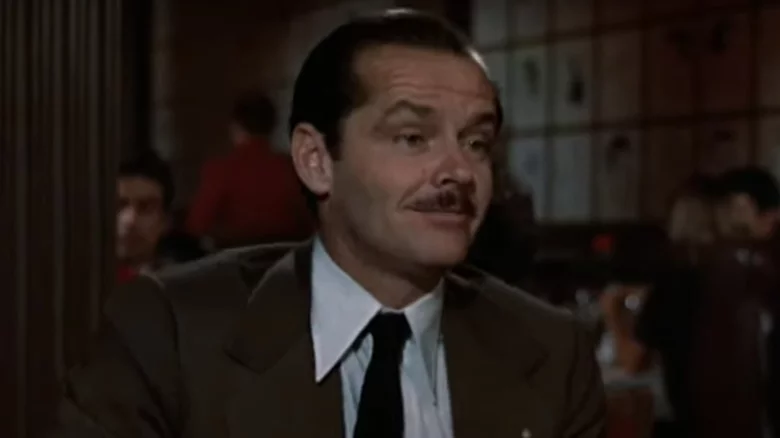
The Last Tycoon is yet another movie that boasts an extraordinary lineup of ability both behind and in front of the camera but regrettably fell short in execution, much like “Man Trouble” and “The Fortune” did. Robert De Niro, John Carradine, Anjelica Huston, Donald Pleasance, Tony Curtis, and Robert Mitchum are among the impressive cast members.
The script for “The Last Tycoon” was written by two-time Oscar nominee and three-time BAFTA winner Harold Pinter, who is also known for writing the screenplays for “The Pumpkin Eater, “The Go-Between,” The French Lieutenant’s Woman, and “The Betrayal,” and ” Elia Kazan, the two-time Academy Award-winning director of such classics as “On the Waterfront,” “A Streetcar Named Desire,” and “East of Eden,” among others, was seated in the director’s chair. Nevertheless, despite having all the necessary elements for a fantastic movie, it still failed, with the majority of Rotten Tomatoes reviewers calling it lifeless and dull.
40. Anger Management
Adam Sandler and Jack Nicholson collaborated on the crude comedy “Anger Management” in 2003. It is likely to be popular with fans of Sandler’s typical comedies but less likely to succeed with others. Sandler portrays a common man who, following a violent confrontation on an airplane, is ordered by the court to attend anger management therapy.
Nicholson portrays the unorthodox anger management therapist who administers the antithesis of standard therapy to Sandler’s character. With performances by Woody Harrelson, Luis Guzmán, Marisa Tomei, and John Turturro, the supporting ensemble is significantly stronger than the typical Adam Sandler comedy.
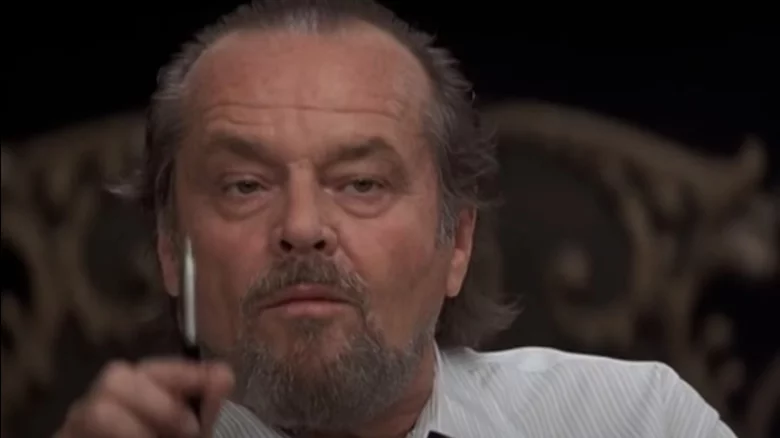
In the final stages of Nicholson’s acting career, “Anger Management” debuted. Before “Anger Management,” he had already delivered a number of successful comedy performances, but possibly none so obscene. Although the film caused controversy, it does have a fair share of supporters. The critics at Bad Tomatoes awarded it a rotten rating. However, the general public was more forgiving and scored “Anger Management” a fresh rating.
39. Heartburn
The 1986 romantic movie “Heartburn” didn’t exactly warm the hearts of Rotten Tomatoes experts and viewers alike, but it had a lot of promise. On paper, a romance starring Jack Nicholson and Meryl Streep seems like a winning combination, but with Mike Nichols at the helm and a screenplay by Nora Ephron that was adapted from her book of the same name, the movie’s potential soars even higher.
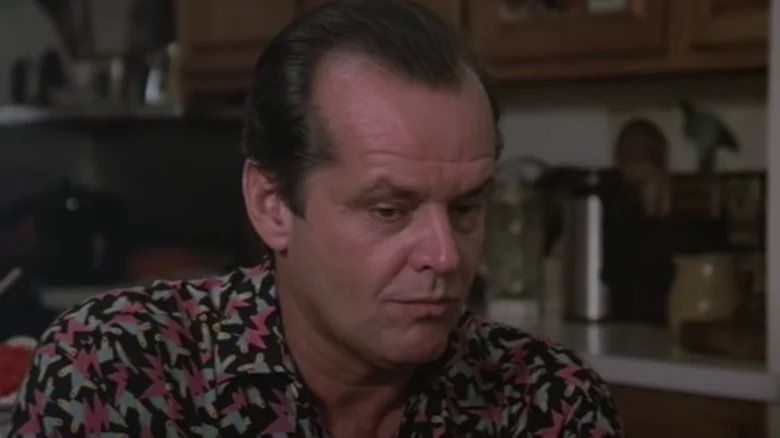
Jeff Daniels, Stockard Channing, Mamie Gummer (Meryl Streep’s real-life daughter), and even renowned director Milos Forman, who plays one of the few significant acting parts of his career, round out the strong supporting cast. Nicholson was previously directed by Forman in “One Flew Over the Cuckoo’s Nest,” one of his most lauded movies. Prior to its debut, “Heartburn” had a lot of buzzes, but regrettably, the majority of people were unimpressed.
Famous film critics Siskel & Ebert expressed this attitude on their television program, where they both harshly criticized the movie, calling it lightweight, silly, lacking in drama, and having nothing whatsoever to say. They declared the movie to be a disappointing failure, accusing Nora Ephron’s script and Mike Nichols’ direction of wasting Streep and Nicholson on subpar material.
38. Hoffa
The true story of Jimmy Hoffa, the leader of the Teamsters Union who seemed to have ties to organized crime and went missing without a trace in the 1970s, is depicted in the film “Hoffa.” In order to more closely resemble the actual Jimmy Hoffa, Nicholson, who plays the lead character, wears prosthetics. Danny DeVito, who also directed and produced “Hoffa,” his third feature film, co-starred with Nicholson in the movie.
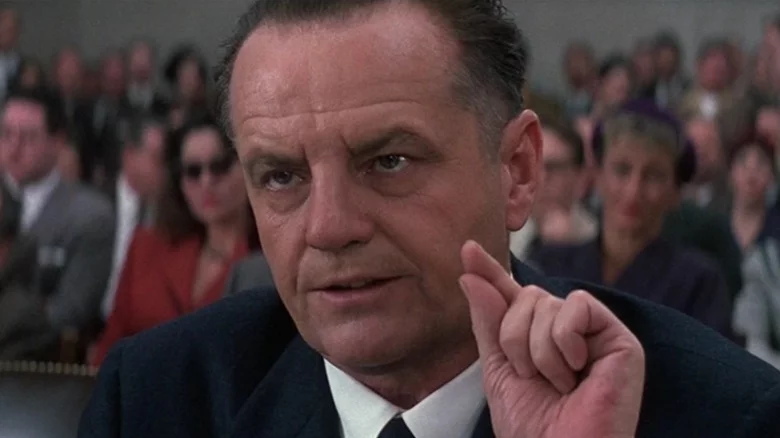
David Mamet, the renowned playwright and screenwriter behind works like House of Games “Glengarry, Glen Ross,” “The Untouchables,” and another Jack Nicholson movie that earned better reviews, “The Postman Always Rings Twice, penned the screenplay for this fictionalized authentic story.
On Rotten Tomatoes, “Hoffa” divided viewers and critics. More than 50% of those who gave the movie a rating thought it was good, but “Hoffa” fell just short of earning a new score from either party. In his glowing review of “Hoffa,” Roger Ebert singled out Danny DeVito’s skill as a director as a standout.
37. Mars Attacks
Seven years after their initial collaboration on 1989’s “Batman,” Jack Nicholson and filmmaker Tim Burton returned for the wacky extraterrestrial invasion film Mars Attacks. This movie was purposefully made-to-be cloying science fiction comedy that aimed to serve as both a satire and an accolade to older science fiction flicks from the 1950s. When lethal invaders from Mars arrive, Nicholson plays the United States President, who is put in a tight and hazardous situation. Nicholson, who played two roles, also played a sleazy land baron who perished in the invasion as a supporting character.
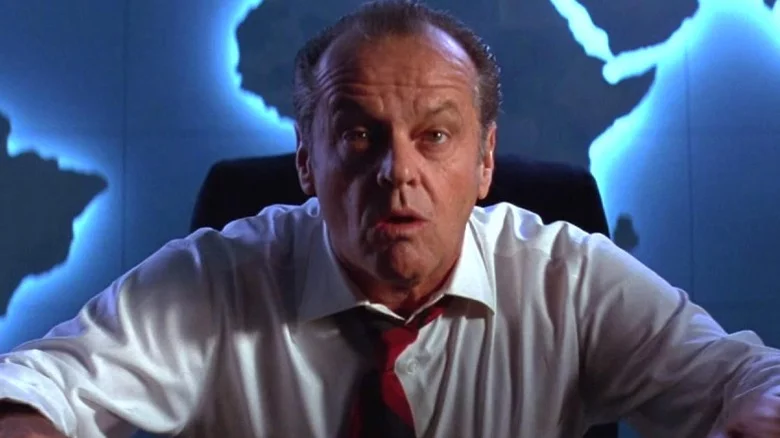
Nicholson was far from the only well-known actor in the cast; others included Pierce Brosnan, Natalie Portman, Martin Short, Michael J. Fox, Pam Grier, Danny DeVito, Glenn Close, Annette Bening, and more. The movie was totally full of famous celebrities, but not everyone appreciated it. Many people didn’t get the unique type of humor that “Mars Attacks!” deployed, but some people did. The film received a poor review from The New York Times, which described it as “simply a parade of scattershot humor, more often odd than hilarious and most of the time just flat.”
36. Ironweed
Following their collaboration in the controversial “Heartburn,” Jack Nicholson and Meryl Streep reunited for Hector Babenco’s “Ironweed” the following year. Although the outcome was somewhat more well-liked, it was still not good enough to achieve a new Rotten Tomatoes rating.
The Great Depression is shown in the movie “Ironweed” in New York. As two homeless people struggling with alcoholism, illness, and crippling sadness, Nicholson and Streep play the lead roles. William Kennedy wrote both versions of the narrative, which was taken from his book of the same name. The cast also featured the acting prowess of Tom Waits, Nathan Lane, and Fred Gwynne to support Nicholson and Streep.
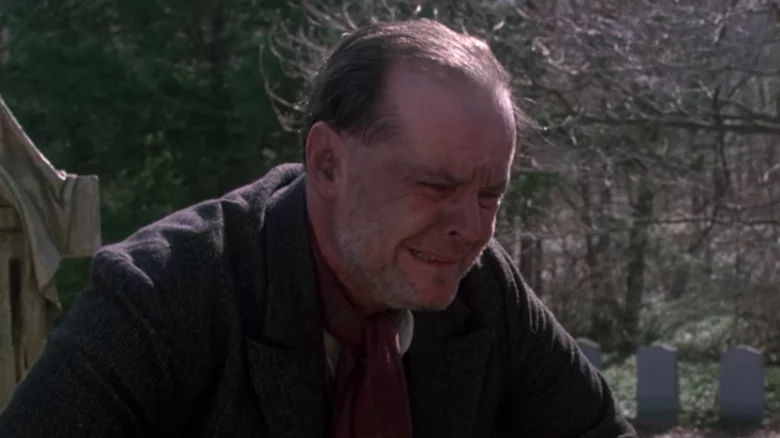
This somber drama portrays a difficult time without expressing much optimism. Many film critics disapproved of the movie and accused it of being overly depressing due to the film’s overwhelming bleakness and lack of hope. The movie received harsh criticism from Variety, which said, “Ironweed is a film without the need for an audience and no justification for existence but its own self-importance.” Even while the movie may not have received positive reviews overall, Nicholson and Streep both came out on top and received Oscar nods for their performances.
35. Studs Lonigan
A 1960 drama called “Studs Lonigan” takes place in Chicago in the 1920s. The central protagonist of Studs Lonigan is a youthful man who tries to escape the filth and violent environment he was raised in, which has conditioned him to turn to violence as well.
Christopher Knight played the lead in one of just two film roles he ever had. Studs fight a bully named Weary Reilly, played by Jack Nicholson, in a fistfight. “Studs Lonigan” is the first of Nicholson’s movies to receive a new Rotten Tomatoes rating, despite the fact that only a small number of critic reviews have been counted.
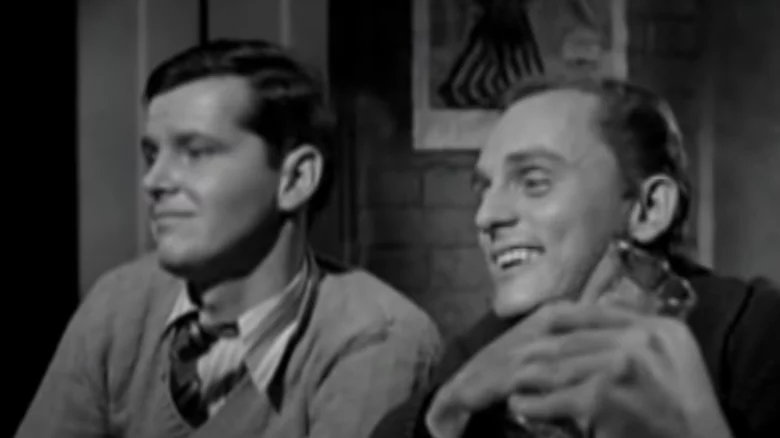
The tale was adapted from James T. Farrell’s book “Young Lonigan,” which was initially released in the early 1930s. The book is set in the 1910s, as opposed to the 1920s of the movie. The “Young Lonigan” book was the first in a trilogy that followed the life of the fictional Studs Lonigan character. Though the entire trilogy was produced as a television miniseries in 1979, the remaining two volumes were never produced for the big screen.
34. Blood and Wine
The partnership between actor Jack Nicholson and filmmaker Bob Rafelson in “Blood and Wine” was only one of many. While “Blood and Wine” performed significantly better than their first film together, “Man Trouble,” critics on Bad Tomatoes gave it a slightly fresh rating, despite the fact that the general public still gave it a rotten rating.
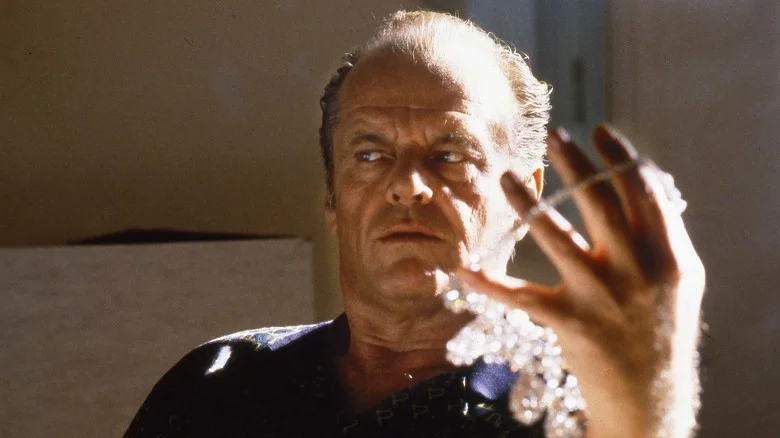
Nicholson plays a man with a struggling wine business who recruits Michael Caine’s safecracking acquaintance to assist him in pulling off a diamond theft in order to get money to stay afloat. The actual diamond robbery actually presents the characters with little difficulty, which is an intriguing twist on the clichés of the heist movie genre.
Instead, it is actually the sale of the diamonds that turns out to be risky and difficult after the crime. Jennifer Lopez, Judy Davis, and Stephen Dorff complete the core cast. The film is recommended by Roger Ebert, who praised the film’s inversion of heist movie clichés and called it “richly detailed” and included “one of Nicholson’s greatest performances.”
33. Wolf
In the movie “Wolf,” Jack Nicholson plays a publishing company that is bitten by a werewolf and progressively transforms into one. In contrast to the majority of werewolf movies, when the transformation is portrayed as a terrible curse, Nicholson discovers that his life starts to get much better right away. His zest for life is reignited, and he advances in his career while also gaining the affection of Michelle Pfeiffer’s character, his boss’s daughter. James Spader, David Hyde Pierce, and Christopher Plummer are also included in the cast.
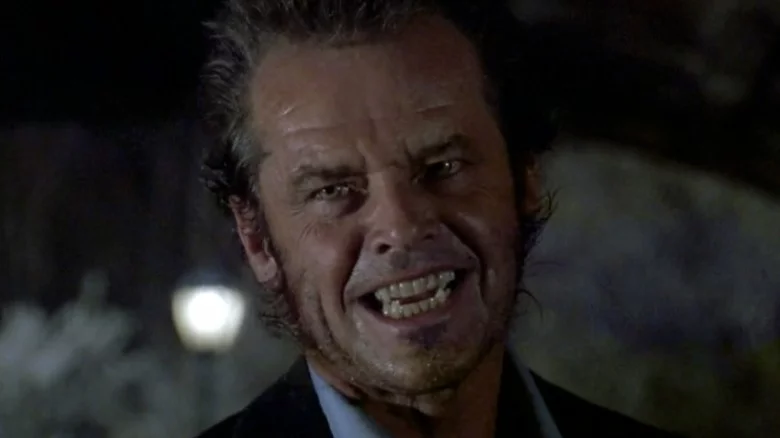
Following the poor reviews for “The Fortune” and “Heartburn,” director Mike Nichols’ final film with actor Jack Nicholson, “Wolf,” fared significantly better with reviewers and viewers alike, earning a fresh score on Rotten Tomatoes. Peter Travers, writing a review for Rolling Stone, termed the film “a thrilling romantic thriller with a darkly hilarious subtext” and commended Nichols’ direction as well as Nicholson’s performance as the lead.
32. The Border
The Border stars Jack Nicholson as a dishonest border agent who tries to change his ways by assisting an immigrant mother whose kid is taken. The film is set on the border of Mexico and Texas. The remaining members of the major cast include Harvey Keitel, Elpidia Carillo Warren Oates, and Valerie Perrine. Although the movie was first released in 1982, its themes and subject matter have kept relevant and current due to the ongoing corruption among U.S. border officials.
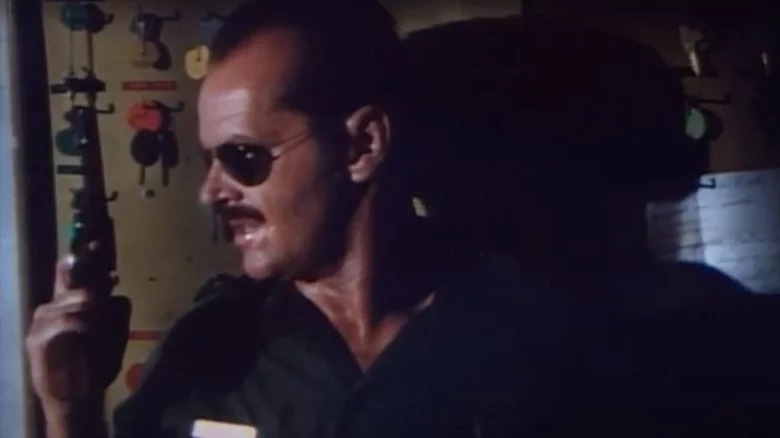
Tony Richardson, who had won the best filmmaker and best picture Oscars for his 1963 movie “Tom Jones” and the best British script and best British film BAFTAs for his 1961 movie “A Taste of Honey,” directed “The Border.” Although “The Border” from the 1980s didn’t quite receive the praise of his work from the 1960s, it was nevertheless well received and received a fresh rating from Rotten Tomatoes critics.
Even though the movie’s finale bothered Gene Siskel, he still thought it was worth viewing and praised Nicholson’s performance, considering it his best starring performance since “One Flew Over the Cuckoo’s Nest.”
31. The Two Jakes
“The Two Jakes” is undoubtedly one of Jack Nicholson’s most interesting movies, despite not being among his top works. Nicholson occasionally directed movies in addition to appearing in them, and “The Two Jakes” is one of the few movies he did so during his career. Nicholson wasn’t supposed to be the director of the film, but he ended up doing so after production issues threatened to derail the project.
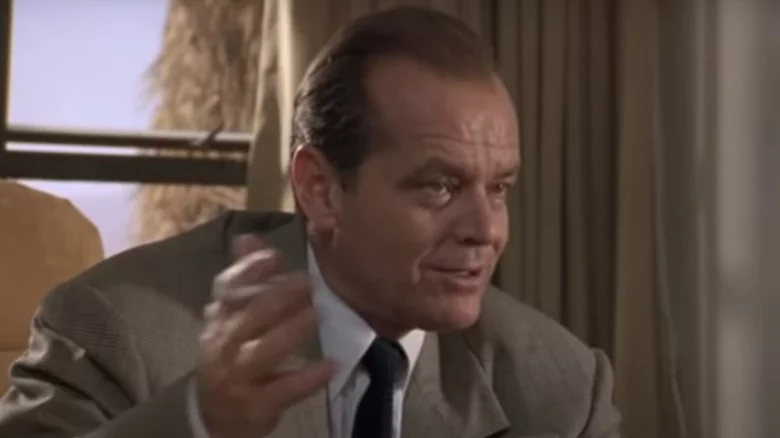
“The Two Jakes,” which debuted in the 1990s, was a long-overdue sequel to Nicholson’s 1974 picture “Chinatown,” one of his most well-liked works. Roman Polanski was succeeded as director by Nicholson, who returned as private eye J.J. Gittes. Robert Towne, who wrote the first film’s screenplay, also wrote the sequel. Originally planned as the first installment of a trilogy, “Chinatown” was never completed.
The private eye lead in “The Two Jakes” finds himself involved in yet another intricate crime and mystery scenario, this time including murder, adulterous, and oil mining, similar to the first movie. Longtime fans of “Chinatown” were in for a little bit of a disappointment, despite the film’s relatively positive reviews, as most critics concurred that “The Two Jakes” fell short of the original movie’s legacy.
Even so, many critics agreed that the movie was worth watching if you went in with tempered expectations. The energy, dramatic propulsion, and sense of evil that animated Polanski’s “Chinatown” is mostly absent from “The Two Jakes,” according to critic Philip French of The Observer, who summed up the response in his review.
However, despite its obscurity, it is a smart, entertaining noir thriller. Whether or not the movie’s underwhelming reviews were to blame, “The Two Jakes” ended up being Nicholson’s final effort in the director’s chair.
30. The Witches of Eastwick
The movie, Witches of Eastwick, is the first movie that Nicholson to obtain new ratings on Rotten Tomato from both public spectators and critics. Jack Nicholson plays the male protagonist alongside Susan Sarandon, Michelle Pfieffer, and Cher as three divorced people who are each tempted by Nicholson’s diabolical character using unethical ways in the film adaptation of a John Updike novel.
A sequel to the book was published, but a follow-up movie was never made. Early in the 2000s, a different version of the book was adapted as a TV movie, and later in the decade, it was remade as an ABC television series.
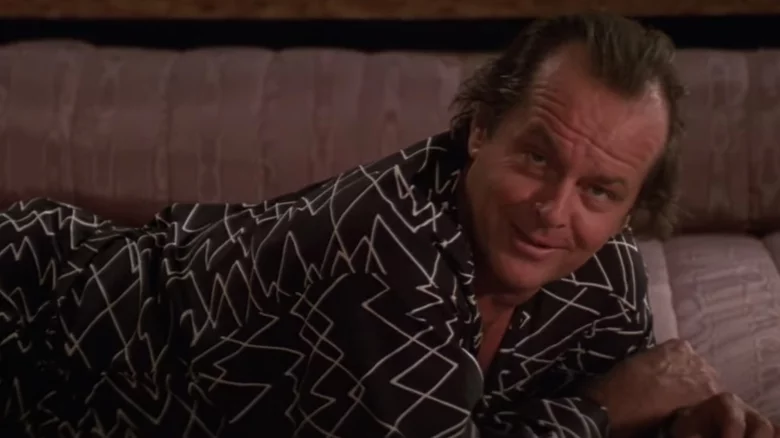
After completing his first “Mad Max” trilogy, George Miller made his directorial debut with “The Witches of Eastwick.” Miller added extra special effects and crazy humor to the novel’s events, which polarised some viewers. Variety gave the movie a positive review, praising Nicholson as its standout performance. Numerous media publications echoed this opinion, with Gene Siskel and The Hollywood Reporter both praising Nicholson’s performance.
29. The King of Marvin Gardens
When “Five Easy Pieces” debuted in theatres in 1970, it established Jack Nicholson and director Bob Rafelson as an important talent to watch out for. “The King of Marvin Gardens,” their follow-up movie, was released two years later. Although their second drama didn’t have the same momentous impact as their first effort, most critics nevertheless gave it favorable reviews.
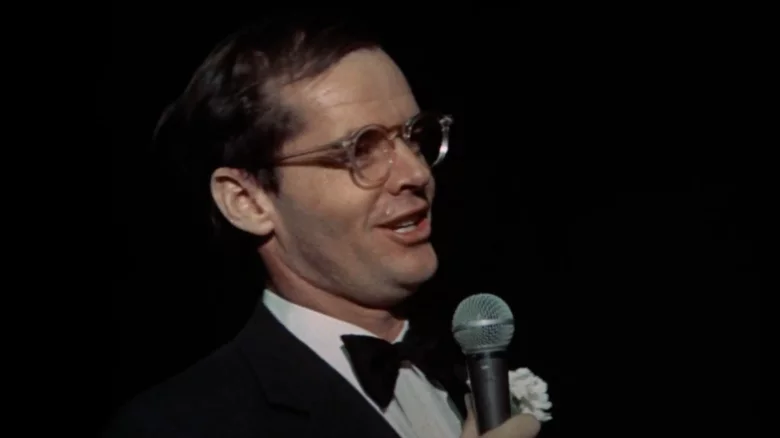
A radio host is portrayed by Jack Nicholson, a con artist by Bruce Dern, a partner in crime by Ellen Burstyn, and her stepdaughter by Julia Anne Robinson. In this land scam involving a tropical island, Nicholson is the target, but he isn’t quite as trusting as his brother believed. Scatman Crothers, who would later go on to perform with Nicholson once more in “The Shining,” is another important member of the cast.
Others, like Roger Greenspun of The New York Times, thought it to be a big letdown that even went so far as to damage the reputation of that earlier collaboration. Some critics, like Roger Ebert, believed “The King of Marvin Gardens” to be a predominantly excellent sequel to “Five Easy Pieces.” In his further explanation, Greenspun stated that what “appeared like excellence in ‘Five Easy Pieces’ two years ago looks like the most sanctimonious of worn clichés, a low-key but very vacuous bombast exploiting rather than investigating its topics.”
28. Batman
Tim Burton’s adaptation of “Batman” for the big screen played a significant role in the creation of the superhero movie genre, even though it may seem out of place when compared to the current wave of immensely successful superhero films from the MCU and DCEU or even Christopher Nolan’s “Dark Knight” trilogy. Tim Burton’s “Batman” gave a far deeper and more somber take on the Caped Crusader than the Adam West “Batman” tv show, and Jack Nicholson’s portrayal of The Joker forever changed one of pop culture’s most recognizable villains.

“Batman” was a huge box office hit that set a cultural standard for following superhero films. It made nearly $411 million worldwide on a $35 million budget. “Batman Returns,” directed by Burton, had Michael Keaton reprising his role as the title character, although the response was less enthusiastic this time around. Up until Christopher Nolan’s series 16 years later, Burton’s portrayal of the superhero remained the only legitimate big-screen interpretation of Batman.
27. Something’s Gotta Give
The 2003 romantic comedy “Something’s Gotta Give” was written and directed by Nancy Meyers, who had previously explored a similar theme in films like “What Women Want,” “Father of the Bride,” “The Holiday,” and “It’s Complicated.” With Diane Keaton as the one woman who is an appropriate age for him, Nicholson plays a record producer who enjoys dating younger women. Keanu Reeves, Amanda Peet, and Frances McDormand round out the supporting cast.
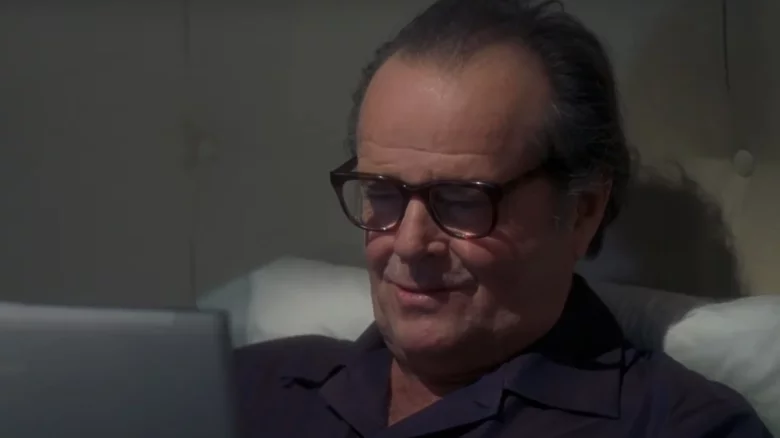
“Something’s Gotta Give” is one of Nicholson’s most well-known later films and one of the last of his acting career to be released before his retirement. The leads’ advanced ages played a crucial role in the story, contributed to the film’s lasting impression, and made it stand out from other romantic comedies. The movie was highly recommended by Rolling Stone’s Peter Travers, who called Nicholson “hilarious” and said Keaton “nails every chuckle and nuance… She takes your soul and the movie.”
26. Goin’ South
A Western comedy from 1978 called “Goin’ South” takes place in Texas soon after the Civil War. A horse thief who is scheduled to be hanged gets a second chance because of particular legislation the town has that permits the condemned to avoid the gallows by getting married, which is played by Jack Nicholson. The local woman who asks for his hand in marriage is portrayed by Mary Steenburgen. However, she has a secret agenda. Nancy Cartwright, Danny DeVito, John Belushi, and Christopher Lloyd are notable actors who are included in the cast.
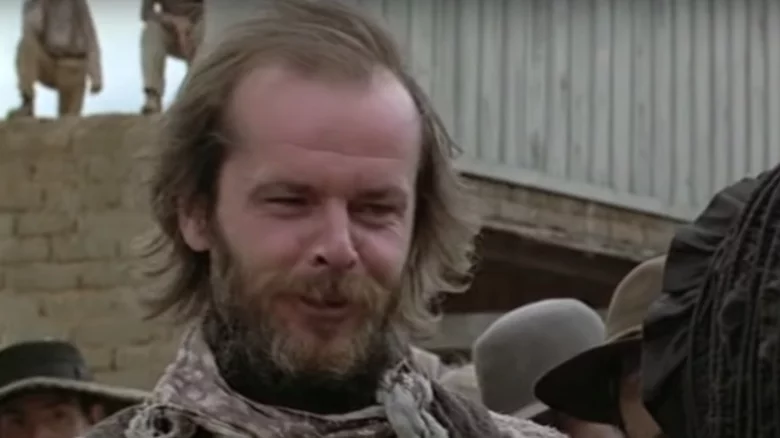
“Goin’ South” was one of the few movies Jack Nicholson directed during his career in addition to acting in them. According to critics on Rotten Tomatoes, this is Nicholson’s most well-liked film, with several of them praising his direction as the movie’s unexpectedly strong point. It would be another 12 years before he would helm another film, “The Two Jakes,” to mixed but still decent reviews.
25. The Crossing Guard
Jack Nicholson plays the revenge-obsessed main character in the crime thriller from 1995 titled “The Crossing Guard.” Following the death of his daughter at the hands of a drunk driver (David Morse), Nicholson’s role has spent the subsequent six years plotting and daydreaming about exacting lethal retribution while awaiting the driver’s release from prison.
Instead of murdering the drunk driver right away, he warns him that he will be killed in a week. This week’s episode of “The Crossing Guard” focuses on Nicholson’s character’s downward spiral into an unhealthy preoccupation and Morse’s character’s struggle to accept his impending demise.
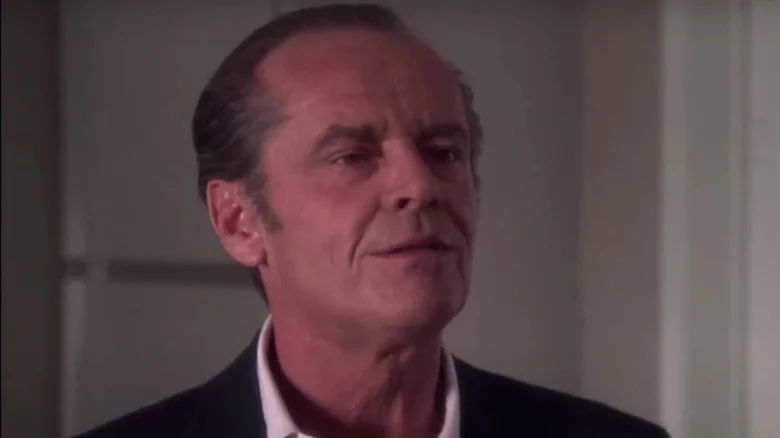
The supporting cast also includes John Savage, Piper Laurie, Anjelica Huston, Robin Wright, and others. There was one more noteworthy actor in the movie, but he worked behind the scenes rather than on screen. Sean Penn, an actor, wrote and directed “The Crossing Guard,” his second movie after 1991’s “The Indian Runner,” which also featured David Morse. Rotten Tomatoes critics praised and criticized Penn’s directing, with some saying he lacked a solid understanding of the plot while others praised him for getting good performances from his leads.
24. Terms of Endearment
The majority of Rotten Tomatoes critics deem “Terms of Endearment” to be a classic in Jack Nicholson’s filmography, despite the fact that its delayed sequel, “The Evening Star,” was exceedingly unfavorably regarded. In fact, “Terms of Endearment” received the prized Certified Fresh certification from Rotten Tomatoes critics, who also gave it a higher rating from the general public.
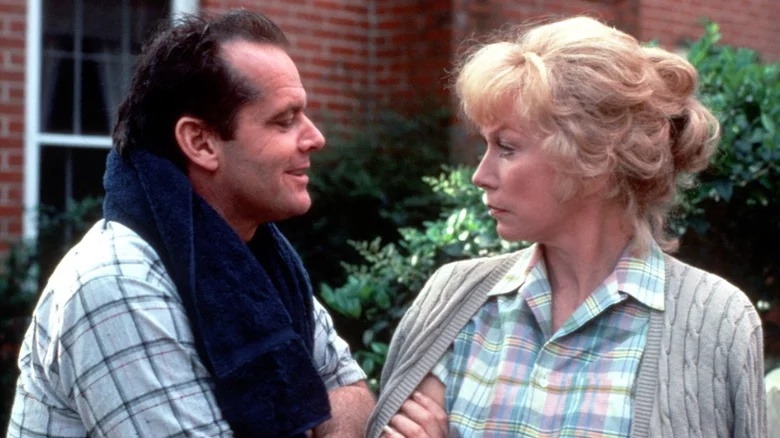
The central theme of the movie is the mother-daughter connection between the Shirley MacLaine and Debra Winger characters. The male cast is as impressive, with Danny DeVito, Jack Nicholson, John Lithgow, and Jeff Daniels all playing significant roles. James L. Brooks, a celebrated screenwriter, wrote the script and made his feature picture directorial debut. He had about the finest start of any director ever, taking home three Academy Awards for the screenplay, directing, and best picture overall. In addition to Shirley MacLaine and Jack Nicholson winning Oscars for their roles, the entire movie received six more nominations. Nicholson received his second Oscar victory and was nominated for seven.
23. The Pledge
After successfully collaborating on “The Crossing Guard” in 1995, Jack Nicholson made a comeback to star in Sean Penn’s follow-up movie, “The Pledge.” This time around, Nicholson portrays a detective who promises to identify the killer of a grieving mother’s daughter on the day he was set to retire. When an innocent, mentally handicapped man confesses to the police, they declare the case closed. However, Nicholson’s role is convinced that the police picked the wrong man, and he won’t let retiring stop him from locating the real culprit by any means.
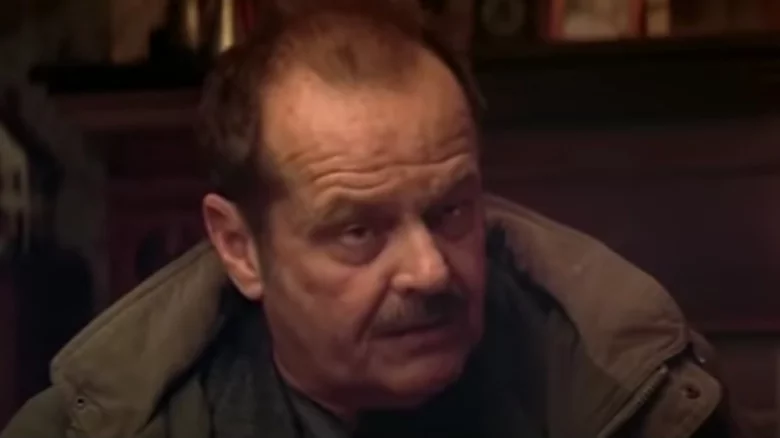
Sean Penn’s reputation allowed him to cast a wide number of talented performers who all deliver outstanding performances in both major and minor roles. The strong cast is completed of Patricia Clarkson, Aaron Eckhart, Tom Noonan, Robin Wright, Vanessa Redgrave, Helen Mirren, Mickey Rourke, and Benicio Del Toro. Though some Rotten Tomatoes reviewers criticized “The Pledge” for its grim subject matter, the general opinion was overwhelmingly positive.
22. The Postman Always Rings Twice
For this 1981 romantic criminal thriller with noir elements, Jack Nicholson cited irreconcilable differences with his longtime partner, director Bob Rafelson, just after teaming with Stanley Kubrick on “The Shining.” The Postman Always Rings Twice was written by famed playwright and filmmaker David Mamet, just like “Hoffa,” but this time the narrative was adapted from James M. Cain’s novel of the same name. Lana Turner and John Garfield played the main characters in the 1946 motion picture adaptation of the story.
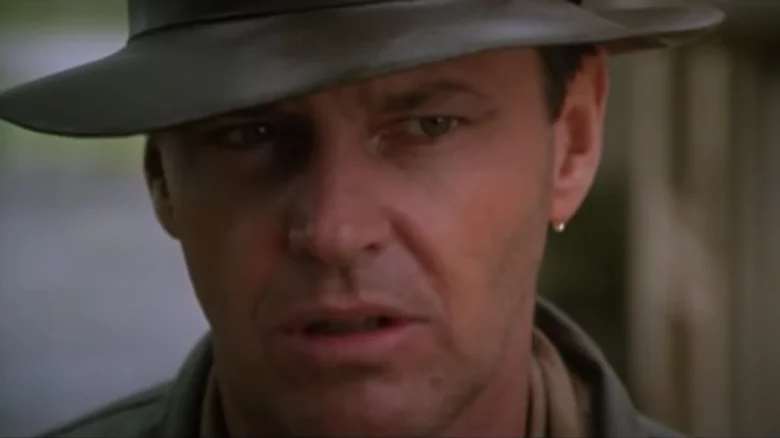
Jack Nicholson portrays a vagabond who visits Jessica Lange’s character’s husband’s café and develops feelings for her. The two begin a passionate romance and shortly after begin to plot the assassination of her husband, John Colicos. Major supporting players include Thomas Hill, Michael Lerner, and Anjelica Huston. Many Rotten Tomatoes reviewers praised “The Postman Always Rings Twice” for its cinematography and the central love between the leads.
21. The Missouri Breaks
In the 1976 Western “The Missouri Breaks,” Jack Nicholson and Marlon Brando compete against one another as two of the greatest actors of all time. Brando portrays the legendary sharpshooter hired to kill Nicholson and his gang of horse thieves.
Nicholson plays the head of the band of horse thieves. Director Arthur Penn, who has received three Oscar nominations, is most recognized for his work on “Alice’s Restaurant,” “Night Moves,” and “Bonnie and Clyde.” Penn was familiar with the genre because he had previously directed “The Left-Handed Gun” with Paul Newman and “Little Big Man” with Dustin Hoffman.
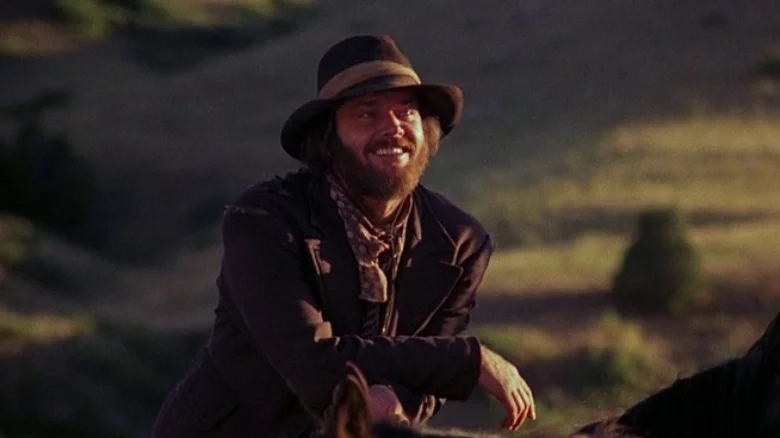
In a recent review that took a retrospective look at this 1970s Western, The Guardian discovered that “The Missouri Breaks” was a movie that had improved noticeably over time. The picture was not well regarded when it first came out, but with time, according to critic Xan Brooks, it has improved its standing. He claimed that it features possibly Marlon Brando’s finest performance to date, considering how the actor spent the duration of the film neglecting the screenplay and Arthur Penn’s direction in favor of acting as he pleased.
20. A Few Good Men
In “A Few Good Men,” Jack Nicholson said one of his most famous lines of dialogue, if not the most famous sentence of all time. One of the dialogue exchanges that has been cited, mocked, and imitated the most in popular culture is “You can’t handle the truth!”
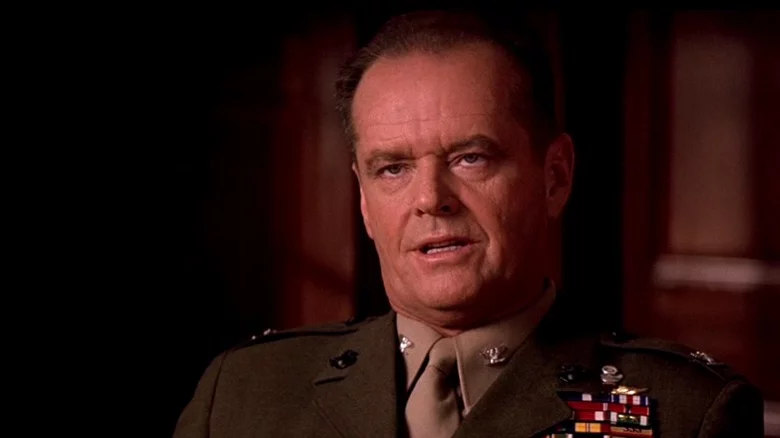
Famous screenwriter Aaron Sorkin turned his stage drama “A Few Good Men” into a movie. It is mostly a courtroom drama, although it breaks the mold of other legal thrillers by using military law in Washington, D.C.
Beyond the famous line mentioned above, Sorkin’s trademark excellent dialogue can be seen throughout the whole script. Along with Nicholson in the hostile role of Colonel Nathan R. Jessup, director Rob Reiner assembled a superb cast that includes Tom Cruise, Kiefer Sutherland, Demi Moore, Kevin Pollak, and Kevin Bacon. One of the movie’s four Oscar nods, which also included awards for sound, editing, and best picture, went to Nicholson for his performance.
19. Easy Rider
Jack Nicholson had been acting for a while at the end of the 1960s, but his career had not yet taken off and made him a household name. By the end of that decade, Nicholson had been so discouraged by the course of his acting career that he was thinking about giving it up in favor of a career in film production on the production side.
Everything was altered by “Easy Rider.” Nicholson received a lot of attention and praise for his supporting performance, which led to his first Oscar and BAFTA nominations despite the fact that he merely played a supporting role rather than one of the main motorcyclists. His career was rejuvenated and propelled forward by the success of “Easy Rider.”
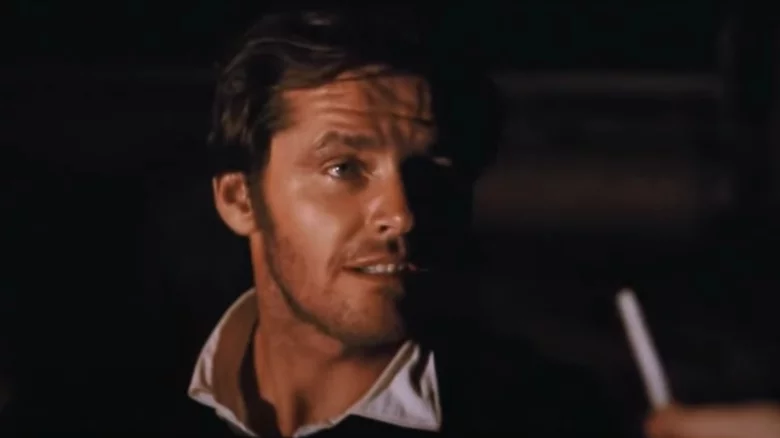
Beyond being a pivotal picture in the development of Jack Nicholson’s career, “Easy Rider” also had a significant role in the industry’s shifts during the 1960s and 1970s and helped launch the New Hollywood movement, which forever altered the nature of filmmaking.
18. The Shining
The Shining is a horror film and is unquestionably a classic. The supernatural and psychological frights have secured their position in genre history. The movie frequently ranks near the top of thorough lists ranking the best horror movies ever produced, including our own list of the top 100 horror movies of all time, the Rolling Stone highest 10, the Rotten Tomatoes list of the 10 scariest movies, the Time Out top 100, and the top 10 lists for Rolling Stone and Rolling Stone.
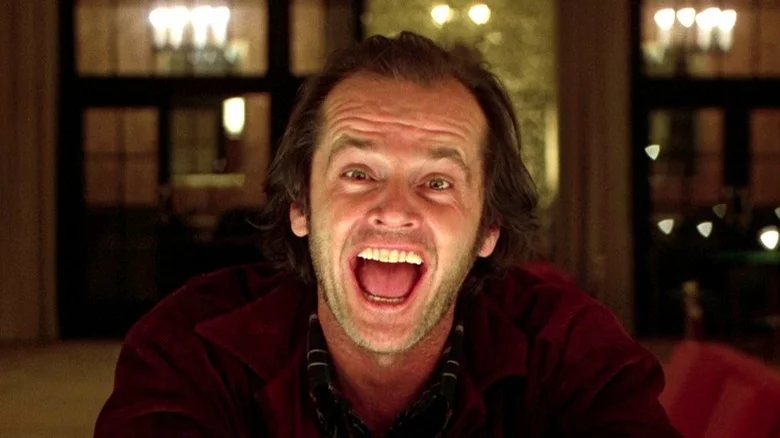
Jack Nicholson delivers a masterful journey into madness in this film, which is set at the enormous Overlook Hotel, where is stranded in the bitter cold. The performances by 6-year-old Danny Lloyd Shelley Duvall, and Scatman Cr others, are all excellent. Although the movie was based on the same-named Stephen King novel, there were several changes made to the screen that left King quite unhappy with the outcome. Later, King authored and created a different adaptation, which was broadcast as a three-part TV miniseries.
The alterations to the original plot were made by director Stanley Kubrick, who also co-wrote the original screenplay with Diane Johnson. Kubrick disregarded Stephen King’s complaints and made the movie his own. Kubrick was renowned for paying close attention to every last detail and for placing high (perhaps excessive) demands on his actors. Scatman Crothers was made to perform countless takes, while Kubrick harassed Shelley Duvall on-site to the point of tears. “The Shining” is a revered horror film, whether the objectives justify the means or not.
17. As Good as It Gets
Jack Nicholson’s performance in “As Good as It Gets” brought him his third and last Academy Award, the second he received while working with director James L. Brooks following “Terms of Endearment” fourteen years earlier. The reviews on Rotten Tomatoes were overwhelmingly positive, with particular acclaim for Jack Nicholson and Helen Hunt’s leading roles as well as Brooks’ effort on the script and in the editing room.
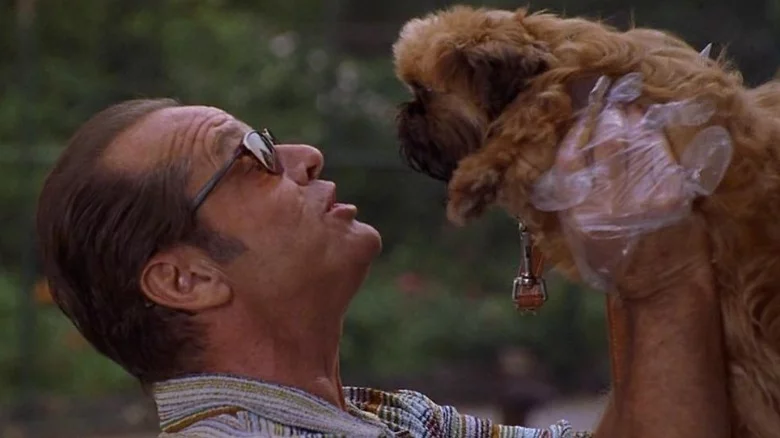
Nicholson plays an intense writer who alienates everyone with his brash demeanor in the movie. The writer’s favorite diner’s sole waitress, Helen Hunt, who also received an Oscar nomination for the part, co-stars in the movie as no one else will serve him.
The neighbor of the writer, a gay artist who is hospitalized after being assaulted and leaves his dog in the writer’s care, is completed by Greg Kinnear. Kinnear was nominated for an Oscar for best actor in a recurring role for his performance, but Robin Williams won the award for “Good Will Hunting.” Additionally, the movie received nominations for Oscars in the best picture, writing, editing, and music categories.
16. Carnal Knowledge
“Carnal Knowledge” was the first movie to feature both Jack Nicholson’s acting and Mike Nichols’ directing prowess. It also received the highest rating from reviewers on Rotten Tomatoes out of their four joint productions. The unusual acting team of Simon and Garfunkel’s Art Garfunkel and Jack Nicholson is featured in this drama from 1971.
The movie follows the two men over a number of years, beginning with the moment they meet as college friends and become best pals and ending when they are middle-aged, with a focus on their different sexual antics. In this small ensemble picture, Cynthia O’Neal, Rita Moreno, Ann-Margret, Carol Kane, and Candice Bergen make up the whole supporting cast.
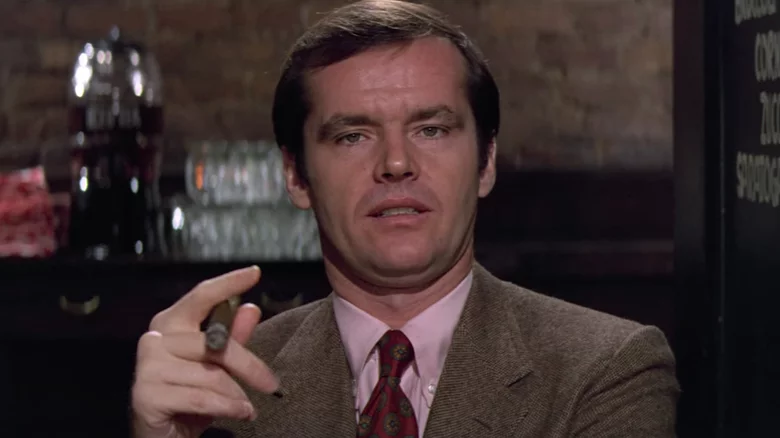
“Carnal Knowledge,” released in the early 1970s while the cinema world was witnessing a seismic transition, was a very divisive movie for its time due to its explicit language and sexual content. While some reviewers dismissed the movie as chauvinist and primarily focused on the male gaze, others thought it explored further and offered a perceptive comment on gender norms and how societal mores evolve through time. The movie “Carnal Knowledge” received high praise from the New York Times and Roger Ebert, who gave it a perfect score of four out of four and termed it “Mike Nichols’ best picture.”
15. The Raven
In the early years of Nicholson’s career, before he established his voice and his career took off, “The Raven,” a low-budget movie from 1963, was surprisingly favorably received. Edgar Allen Poe’s well-known narrative poem of the same name was the inspiration for the movie, albeit many creative liberties had to be taken in order to turn the just over 1,000-word poem into a full-length motion picture. Veteran actors of the horror genre Boris Karloff, Vincent Price, and Peter Lorre portrays the leads, with Nicholson playing a supporting role.
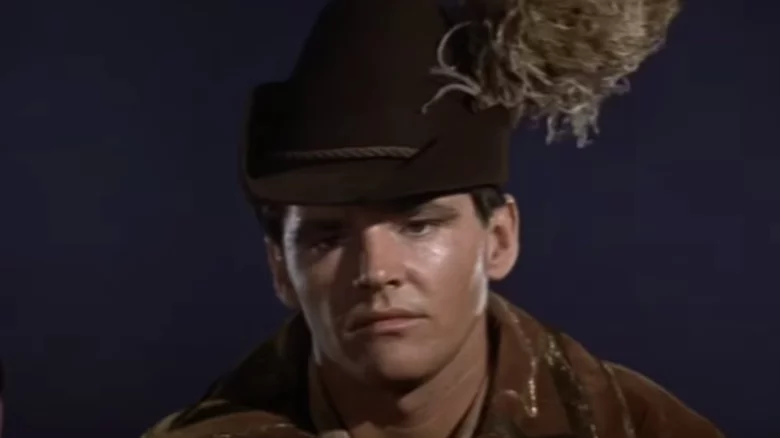
Roger Corman, who was arguably Nicholson’s most significant early partner, helmed “The Raven” as the film’s director. This double-production is possibly the best example of Corman’s propensity for shooting quickly and cheaply. In order to make the most of the available resources, Corman started shooting on one of Nicholson’s lowest-rated movies, “The Terror,” right away after ending “The Raven” early and having a few additional days with the cast, crew, and castle site. It is safe to argue that without “The Raven,” “The Terror” would not have existed at all.
14. Ride in the Whirlwind
Early in his career, Jack Nicholson starred in the Western “Ride in the Whirlwind,” which was published the same year as “The Shooting,” another highly regarded Nicholson Western. Monte Hellman, who had previously worked with Nicholson on Roger Corman’s “The Terror,” directed both movies.
Three common cowhands, played by Cameron Mitchell, Jack Nicholson, and Tom Filer, cross paths with a murderous, stagecoach-robbing gang of outlaws. The cowhands flee as vigilante groups attack the outlaws, but they are marked as fugitives and must contend with the vigilante mob’s unrelenting pursuit because they are mistakenly believed to be pursuing dangerous criminals.
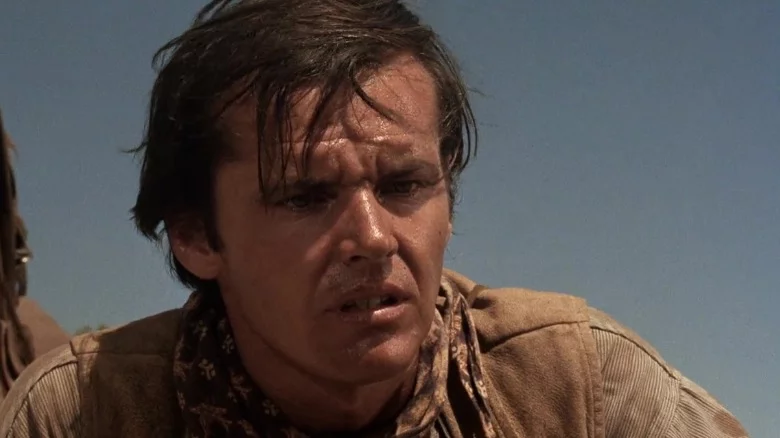
The fact that Nicholson created the screenplay in addition to acting in “Ride in the Whirlwind” is one of its most notable features. Early in his career, Nicholson wrote or co-wrote a few films, but he abandoned screenwriting as soon as he began to see higher success rates as an actor at the beginning of the 1970s. Though he actually wrote and had a secondary role in Hellman’s “Flight to Fury” in 1964, Nicholson only wrote and acted in “Ride in the Whirlwind,” one of his films for colleagues Bob Rafelson and Monte Hellman.
13. The Little Shop of Horrors
Despite its modest beginnings, “The Little Shop of Horrors” is the greatest and most well-known joint production of Jack Nicholson and Roger Corman. “The Little Shop of Horrors” was hurriedly and inexpensively produced in typical Corman flair. The director described the film’s production as a cross between an experiment and a joke, and it was completed in just two days and one night. This fast, low-risk production of a plant that eats people turned out to have a much bigger impact than anyone participating could have ever imagined.
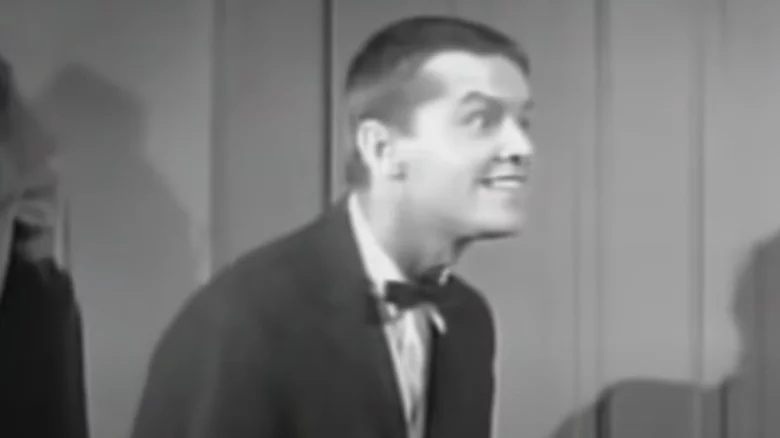
Despite having a minor part, Jack Nicholson made a big impression as the dental patient Wilbur Force, who loves to be in pain. Nowadays, the 1986 remake of “Little Shop of Horrors” may be more likely to come to mind than the 1960 original. While the original is a reduced horror comedy with modest goals, the Frank Oz-directed remake maintained the core premise while ratcheting up the comedy, adding color, expanding the ensemble, and turning the entire thing into a crazy musical.
12. On a Clear Day, You Can See Forever
When most people hear the name Jack Nicholson, they don’t instantly think of singing. Nicholson did occasionally dabble in the musical genre throughout his career, whether it be singing a song in character in movies like “The Fortune” or “Something’s Gotta Give,” writing as well as producing the musical movie “Head” starring The Monkees, or making a brief cameo in The Who’s rock opera “Tommy.” The Vincente Minnelli classic “On a Clear Day You Can See Forever” in 1970 was when Nicholson made his most notable direct contribution to this field.
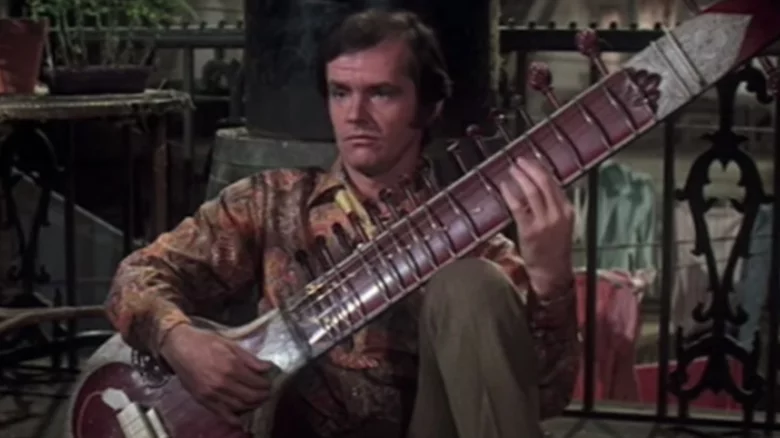
The narrative was developed from the Alan Jay Lerner-penned Broadway musical that shares the same name. The story revolves around a strange romance between a psychiatrist and his patient, who, under hypnosis starts to think of herself as a wealthy Victorian lady who has been reincarnated. Jack Nicholson plays Barbra Streisand’s stepbrother, while the cast also features actors like Bob Newhart and Yves Montand. Fortunately, portions of Nicholson’s role—including his major musical number—that were deleted before the movie’s release were later restored and made accessible.
11. The Shooting
The second of Monte Hellman’s two Westerns, “The Shooting,” starring Jack Nicholson, was released in 1966. In contrast to “Ride the Whirlwind,” in which Nicholson portrayed the endearing protagonist, in “The Shooting,” he portrays Billy Spear, a hired gun at clashes with Warren Oates’s character, a former bounty hunter trying to put his violent life behind him.
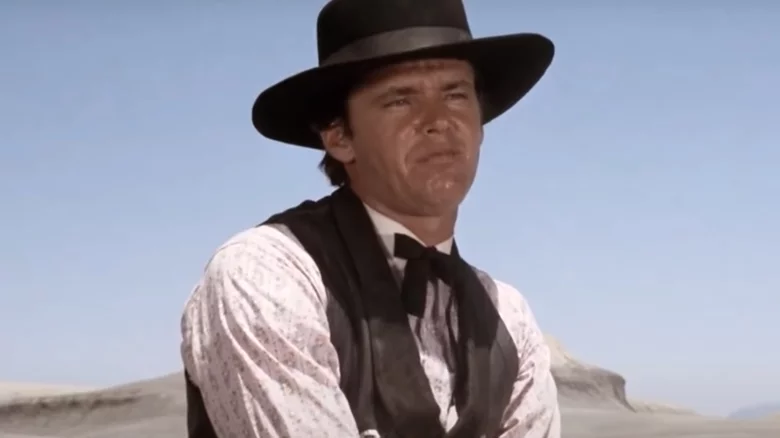
The uncomplicated plot follows a gang of suspicious individuals as they trek across the desert in search of an unidentified goal.
Will Hutchins, who plays the ex-bounty hunter’s naïve companion, and Millie Perkins, who plays the wealthy and enigmatic woman who pays them to protect her on her voyage, are also included in the mix alongside Nicholson and Oates. The movie’s screenplay was written by Carole Eastman for the first time; she later wrote “Five Easy Pieces,” a movie that helped establish Jack Nicholson’s career. For both scripts, Eastman assumed the fictitious name Adrien Joyce.
10. Prizzi’s Honor
In the dark comedy “Prizzi’s Honor,” Jack Nicholson and Kathleen Turner play two mob assassins who fall in love and get into big difficulty when they are hired to kill each other. Both William Hickey and Anjelica Huston, who were in the supporting cast with Nicholson, also garnered Oscar nominations for their work. Out of the eight total Oscar nominations for the movie, Huston was the only one to win.
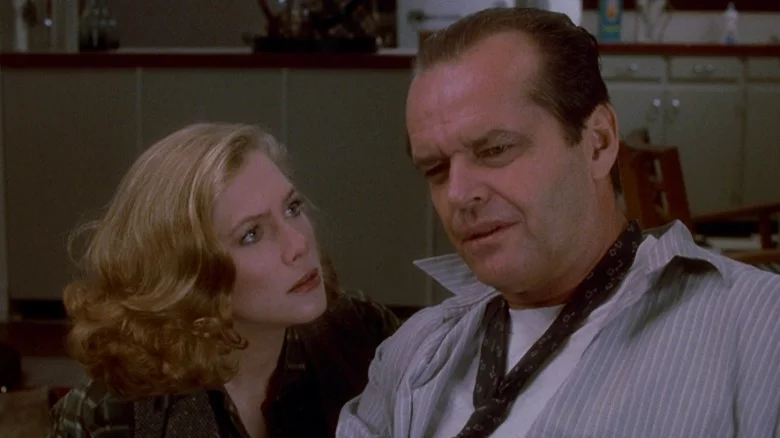
Anjelica Huston was working under the guidance of her father, the renowned director and actor John Huston, making the movie a family affair for her. John Huston had already helmed his father in the 1948 movie “The Treasure of the Sierra Madre,” so he was no stranger to working with family.
For their contributions to their respective films, both family members received Oscars. When “Prizzi’s Honor” was being made, Jack Nicholson and Anjelica Huston were actually dating. According to Roger Ebert, this off-screen interplay between Nicholson and the three Hustons played a significant role in what made the movie “a treasure” one of Huston’s greatest.
9. About Schmidt
Before retiring, Jack Nicholson received his final Oscar nomination for “About Schmidt” by Alexander Payne. Along with Hope Davis, June Squibb, and Dermot Mulroney, co-star Kathy Bates received an Oscar nomination for her work in the movie.
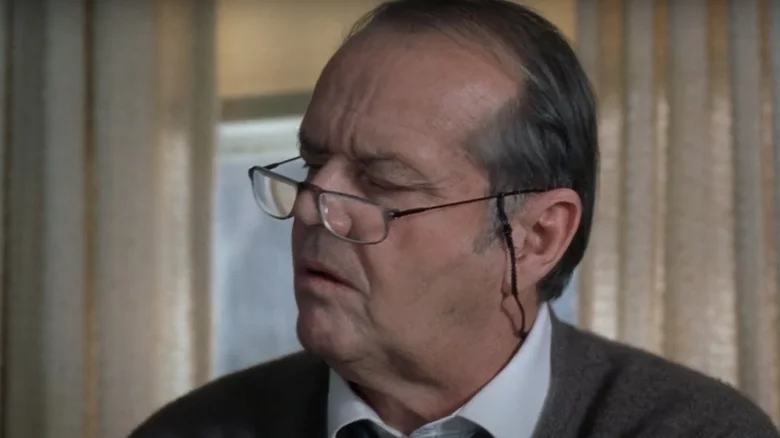
Nicholson plays the titular Warren Schmidt in “About Schmidt,” a recently retired dad who sets off on an RV road trip to get to his daughter’s wedding. The movie is a dramedy in the vein of the works by writer/director Alexander Payne, including “Nebraska,” “Election,” and “Sideways,” among others.
The screenplay by Alexander Payne was adapted from the same-titled book by Louis Begley. Begley followed the same character in “Schmidt Delivered” and “Schmidt Steps Back,” two sequels to the book that have not yet been produced for the big screen. The movie received high praise from critics on Rotten Tomatoes, who described it as both heartwarming and funny.
8. The Passenger
Jack Nicholson left his Oscar-nominated performance in “Chinatown” behind and traveled to the Sahara to collaborate with renowned Italian director Michelangelo Antonioni, who is known for movies like “Blow-Up,” “Zabriskie Point,” and “L’Avventura.” Nicholson plays a freelance journalist who is dispatched to cover an escalating conflict in Africa but is unable to locate any information in the movie “The Passenger.” Instead of reporting on the fight, he makes the audacious decision to pose as a deceased individual who eventually out to be a prominent arms dealer.
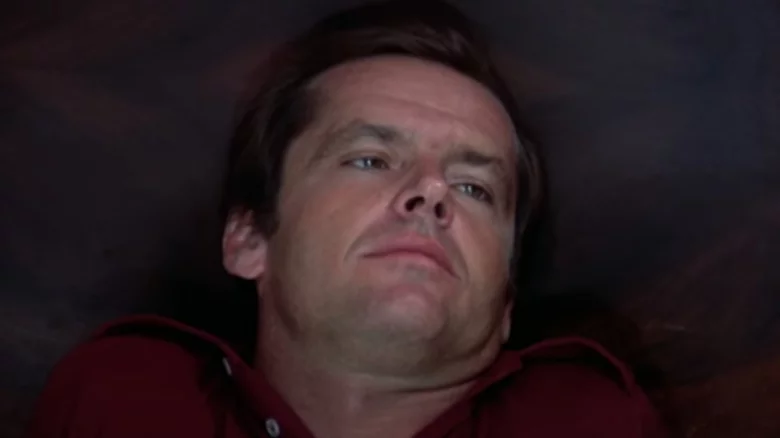
As Antonioni applies his arthouse filmmaking style to the subject, “The Passenger” ultimately falls between a melodrama and a psychological thriller. Many critics commended the movie for having richer undertones and sophisticated themes. Penelope Gilliatt of The New Yorker called it “the story of a guy trying to fly the coop of himself” and applauded the movie for exploring identity. Its intellectual foundations and impressions of a man’s nature, she continued, are far more complex and nuanced than any tale, and the plot was secondary to these more profound notions.
7. Five Easy Pieces
Jack Nicholson’s stratospheric rise may have begun with “Easy Rider,” but “Five Easy Pieces,” which was released the next year, cemented his status as a superstar and contributed to the emergence of the New Hollywood movement. Robert Dupea, played by Nicholson, is an oil rig worker who works a blue-collar job and spends his days drinking and prostitution. When he finds out that his father has a fatal illness, he embarks on a journey back to his roots and home, which he has drifted far from.

As the story unfolds, Carole Eastman’s script reveals more and more of Dupea, revealing that behind his cynical attitude and meager ambitions lies a man who, before he wasted everything, was a gifted classical pianist who hailed from an affluent, upper-class family. Under the direction of his frequent partner Bob Rafelson, Nicholson gives one of his best performances as Dupea, one of the most complicated characters in his filmography.
The majority of Rotten Tomatoes reviewers applauded Nicholson’s performance and the movie as a whole for how well it depicted the culture of the time. The movie received a five-star rating from The Guardian, which described it as “as close to perfection as it comes.”
6. The Last Detail
The Last Detail, a film written by the same scriptwriter as “Chinatown,” stars Jack Nicholson before “Chinatown.” Nicholson had great, complicated characters to get lost in both scripts, and both he and Towne were nominated for Oscars for their contributions to both movies. Nicholson and Otis Young play two Navy officers charged with sending a younger navy sailor (performed by Randy Quaid at the beginning of his career) to a military prison in “The Last Detail.”
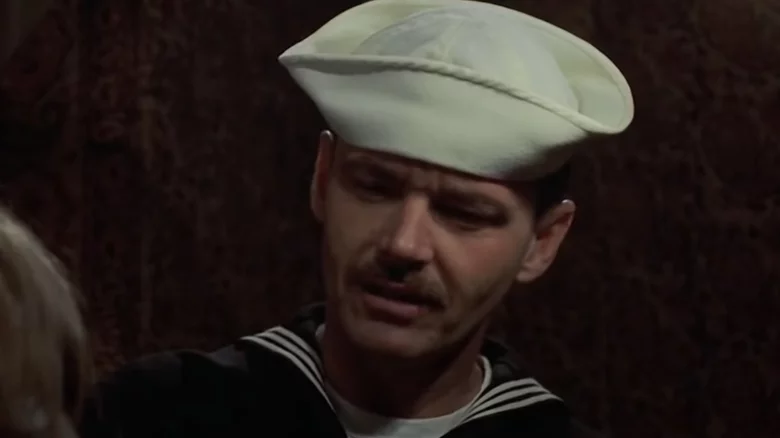
The escorting team initially views the detail as an opportunity to rush through their work and take a few days off from the naval station to have fun while spending their per diem, but as they come to know their captive, their perspectives begin to shift.
The offense of their prisoner, who is still only a teenager and hasn’t really experienced much of life, is only being accused of minor theft. The escorting cops concur that the eight years of imprisonment he has been given are excessive for the small offense he committed, and they promise to make the young man’s trip to prison an unforgettable one.
What follows is a story about three men who become friends because of unusual and unfortunate circumstances. It is practical and realistic, thought-provoking, passionate, and occasionally amusing. With a sardonic, knowing smirk, critic Mattie Lucas gave “The Last Detail” a good rating and said it was “one of the great, underappreciated masterpieces of the 1970s.”
5. Reds
“Reds” went on to be one of most critically praised movies of the 1980s, and its popularity has only increased with time, despite an infamously tense and nearly fatal production. “Reds” was a large production with an epic scope that cost close to $100 million when adjusted to inflation and had a length of well over three hours, yet it struggled at the box office while eventually receiving positive reviews.
Different groups of the American public at the time either viewed the idea of “Reds” taking a docu-drama technique to examine Russia’s Bolshevik revolution while highlighting radical left-wing beliefs as brave and ground-breaking or foolish and inappropriate.
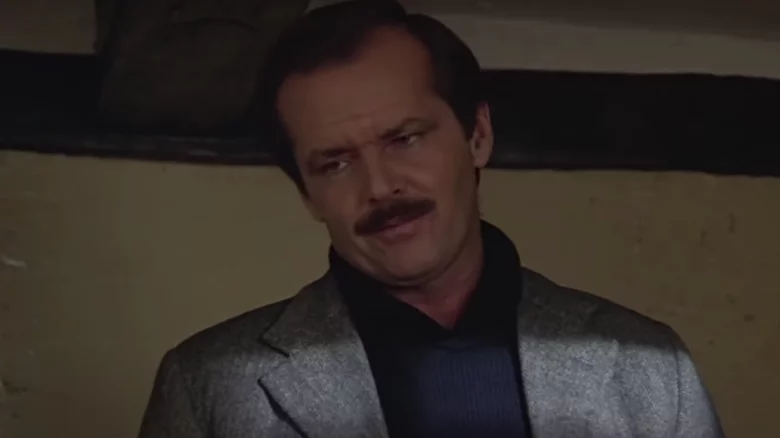
Nicholson, who isn’t the main character this time, plays playwright Eugene O’Neil, the third lead, against Warren Beatty and Diane Keaton. For their performances, all three received a tonne of praise, including attention from prestigious awards. Although the film’s divisive subject and the unsubtle political position may have hindered its box office performance, praise from critics and audiences alike was plentiful. With an astounding 12 nominations and three wins, “Reds” was one of the best movies at the 1982 Academy Awards.
Jack Nicholson, Warren Beatty, and Diane Keaton each received nominations in the film’s four acting categories for the Oscars, and Maureen Stapleton took home the supporting actress prize. Warren Beatty not only played the lead but also directed, co-wrote, and produced “Reds,” earning him the lone Oscar of his storied career for best director.
4. The Departed
The most recent movie to crack Jack Nicholson’s top five by almost twenty years is Martin Scorsese’s “The Departed,” a contemporary gangster classic and one of Nicholson’s final projects before retiring. The story follows a police officer who infiltrates the mafia (portrayed by Leonardo DiCaprio) and a gangster who infiltrates the police (played by Matt Damon) as they travel inexorably toward each other. The main antagonist, played by Nicholson, is the mob boss Frank Costello, who is partially modeled on Boston gangster Whitey Bulger from real life.

The plot of “The Departed” was a movie adaptation version of the Hong Kong movie “Infernal Affairs,” except for the Whitey Bulger connection. Although the original tale was stretched into a trilogy with two sequels/prequels, “The Departed” is a stand-alone narrative. Other than Jack, the performances by Matt Damona and Leonardo DiCaprio is also very enticing, the plot keeps you hooked to the screen, and I am sure you will love the movie for its suspense and powerful setup.
After a long career full of fantastic movies, Martin Scorsese’s first and only Academy Award victory came with “The Departed.” In addition to winning best picture, editing, and adapted screenplay Oscars, the movie also garnered a nomination for best editing from Mark Wahlberg.
3. One Flew Over the Cuckoo’s Nest
“One Flew Over the Cuckoo’s Nest,” which is based on Ken Kesey’s novel of the same name, tells the tale of a regular criminal (Nicholson) who faces prison time and decides to fake insanity in order to complete his punishment in a mental hospital rather than the large prison, believing the experience will be much more comfortable. Nicholson’s character becomes a spokesperson for patient rebellion against the institution in the face of dictatorial Nurse Ratched (performed by Louise Fletcher), who dominates the patients’ lives with an iron fist.

This part, which earned Nicholson his first Oscar, wonderfully captured the countercultural spirit and rebellious energy that he frequently exhibited throughout this phase of his filmography. The movie received five victories and nine nominations altogether, including Nicholson’s Oscar.
The movie “One Flew Over the Cuckoo’s Nest” joined the select group of films that have won the two lead acting, screenwriting, directing, and best picture categories, collectively known as the main Oscar categories.
In addition to Nicholson and Fletcher receiving Oscar nominations for their outstanding performances, the entire cast of patients from mental hospitals—including William Redfield, Christopher Lloyd, Will Sampson, and Danny DeVito —also delivered sensitive, moving performances. Brad Dourif also received an Oscar nomination for his first-ever film role.
Also Read: 35 Best Movies of Al Pacino That Showcase His Longevity
2. Broadcast News
After “Terms of Endearment,” for which they both won Academy Awards, Jack Nicholson and writer-director and director James L. Brooks collaborated on “Broadcast News.” The world of TV journalism is where “Broadcast News” is based, as you would have guessed.
In the movie, a producer and two reporters with widely different degrees of talent and attractiveness engage in a love triangle. This romantic comedy, which is a little more dramatic and satirical than other attempts in the genre, is carried by the charm of its three main actors, William Hurt, Holly Hunter, and Albert Brooks. Alongside Nicholson Robert Prosky, Lois Chiles, and Joan Cusack, portrays an evening news anchor.
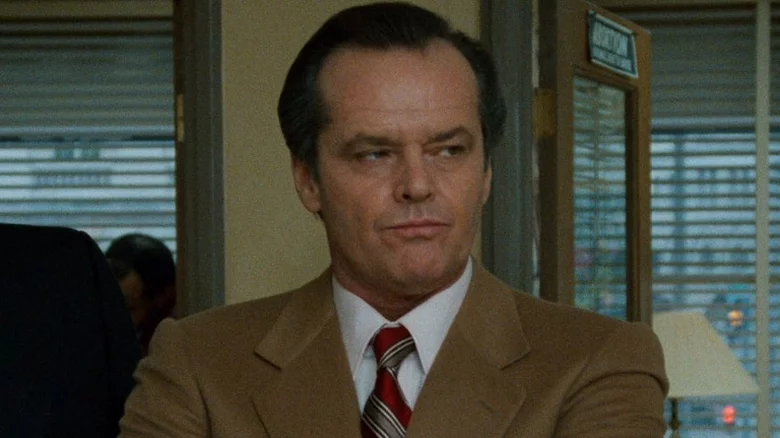
“Broadcast News” received numerous Oscar nominations, just like Brooks’ previous movie “Terms of Endearment.” All three of the leads received nominations for their on-screen work, while the movie also received nods for editing, cinematography, script, and best picture, despite the fact that it didn’t place in any of its categories. The reviews for “Broadcast News” on Rotten Tomatoes were overwhelmingly positive, with particular attention paid to the actors and the wit of the writing.
1. Chinatown
The neo-noir classic “Chinatown” is the movie in Jack Nicholson’s outstanding filmography with the highest rating. Nicholson portrays the private eye of J.J. Gittes in 1937 Los Angeles in one of his most famous roles. Gittes takes on a case that is much more complicated and hazardous than he could have ever imagined from the start, involving criminals, murder, dishonest politicians, familial strife, and even the LA division of water and power. This is done in the spirit of the greatest noir filmmakers.
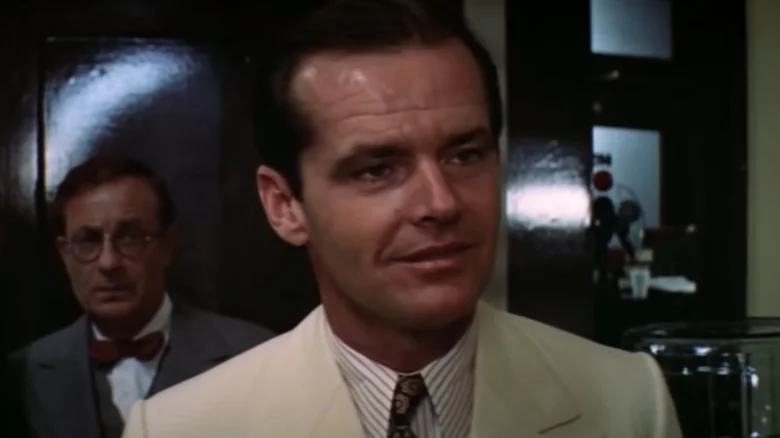
The screenplay by Robert Towne is rich in complexity and nuance, filled with likable characters, and jam-packed from front to back with incisive dialogue that would make any of the noir masters happy. Out of the 11 Oscar nominations for the movie, Towne was the lone recipient, and many scriptwriters and publications regard “Chinatown” as one of, if not the best, script ever written. Roman Polanski received a tonne of recognition for his work as a director, earning both a BAFTA and an Oscar nomination.
Also Read: 50 TV Series like Sherlock That Will Give You an Adrenaline Rush
John Huston and Faye Dunaway gave good portrayals as well, rounding out the main cast. Nicholson received his first BAFTA triumph for “Chinatown” and “The Last Detail,” both of which were written by Robert Towne, as well as his fourth Academy Award nomination for “Chinatown,” which was a strong contender in every Oscars category.
Although Jack Nicholson publicly admitted that he disliked acting roles that were specifically scripted for him, “Chinatown” was a significant exception. For Nicholson alone, Towne created the role of J.J. Gittes, which became one of the actor’s most well-known parts.


